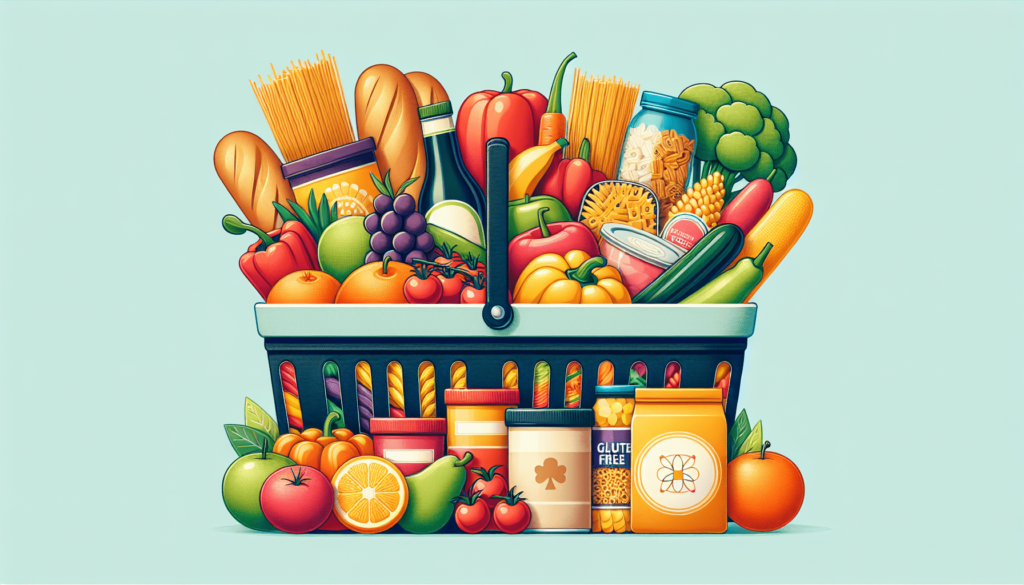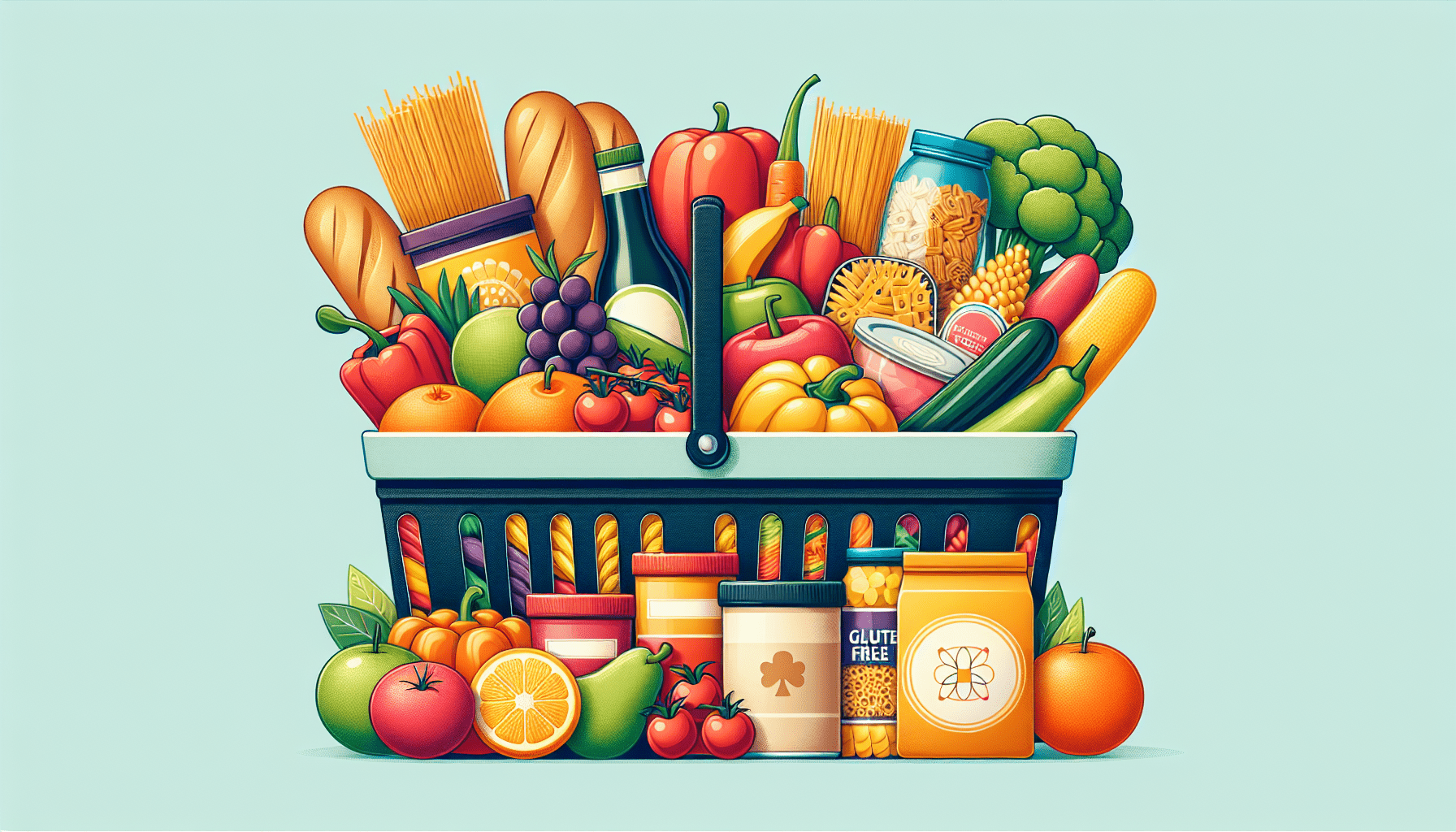Have you ever felt overwhelmed trying to navigate the grocery aisles with food allergies in mind? Allergy-friendly grocery shopping can be daunting, especially for beginners. Whether you or a loved one have food allergies, it’s crucial to ensure that the right choices are made to avoid any health risks.
Understanding Food Allergies
What Are Food Allergies?
Food allergies occur when the body’s immune system mistakenly identifies a harmless food protein as a threat and reacts accordingly. This reaction can cause symptoms ranging from mild (such as a rash) to severe (such as anaphylaxis).
Common Food Allergens
To start, it’s essential to know the most common food allergens. The eight major food allergens include:
| Allergen | Examples |
|---|---|
| Milk | Cheese, butter, yogurt |
| Eggs | Mayonnaise, baked goods |
| Fish | Salmon, tuna, catfish |
| Crustacean Shellfish | Shrimp, crab, lobster |
| Tree Nuts | Almonds, walnuts, pecans |
| Peanuts | Peanut butter, various snacks |
| Wheat | Bread, pasta, baked goods |
| Soybeans | Tofu, soy milk, edamame |
Understanding these allergens will help you in recognizing which foods to avoid while grocery shopping.
Preparing for Your Grocery Trip
Prioritize Planning
Before you head to the store, spend some time planning. This helps to minimize stress and ensure that you have all the allergy-friendly foods you need.
Create a Shopping List
Crafting a detailed shopping list can significantly reduce the time spent at the store and ensure you don’t forget anything important. Include:
- Safe food brands
- Specific products free from allergens
- Alternatives for commonly allergenic foods
Do Your Research
Look up brands and products that are known for being allergy-friendly. Websites, blogs, and forums can be great resources to identify these.

In the Store: Reading Labels
Understanding Food Labels
Reading food labels is critical when dealing with allergies. Here are the details you need to look for:
- Ingredients List: Check for the presence of any allergens.
- Allergen Statements: Manufacturers must list common allergens even if they are only present in trace amounts (e.g., “Contains peanuts” or “May contain tree nuts”).
Cross-Contamination
Check for statements regarding cross-contamination. Phrases like “Manufactured in a facility that processes [allergen]” indicate a risk of cross-contact with allergens.
Navigating the Aisles
When you’re at the store, specific aisles might be more relevant to your needs than others. Knowing where to find allergy-friendly options can save you time.
Produce Section
Fresh fruits and vegetables are generally safe bets. However, if you’re buying pre-cut or packaged produce, always check for any potential allergen contamination.
Dairy Aisle
For those with a dairy allergy, there are various alternatives available. Options include:
- Non-Dairy Milks: Almond milk, soy milk, oat milk
- Non-Dairy Cheeses: Look for brands specifically labeled as vegan or dairy-free
- Yogurts: Check for coconut, almond, or soy-based yogurts
Bakery Section
Bread and baked goods often contain allergens like wheat, eggs, or nuts. Seek out gluten-free bakeries or brands, and always read labels carefully.
Meat and Fish
Fresh, unseasoned meats and fish are typically free of allergens. Pre-marinated or processed products may contain allergens, so checking the ingredient list is vital.
Gluten-Free Section
This section is useful for those with a wheat allergy. Many stores now have dedicated aisles or areas for gluten-free products, including bread, pasta, and snacks.
Top Tips for Allergy-Friendly Shopping
Choose Whole Foods
Opting for whole foods (like fresh produce, meat, and grains) reduces the risk of allergens compared to processed foods that might contain hidden allergens.
Use Allergy-Friendly Apps
There are several mobile apps designed to help individuals with food allergies. These apps can assist you by scanning barcodes to check for allergens or suggesting safe alternative products.
Bulk Buying
Consider buying allergy-friendly items in bulk, especially non-perishable goods. This way, you’ll always have safe foods available at home.
Communicate with Store Employees
Don’t hesitate to ask store employees for assistance. They may have additional information on products or could point you to the right section.

Dining Out: Eating Safely with Allergies
Communication is Key
When dining out or buying from the deli section, make sure to communicate your allergies clearly to ensure food safety.
Choose Restaurants Wisely
Select restaurants with good track records for handling food allergies. Some restaurants specifically cater to dietary restrictions and are more cautious about cross-contamination.
Trusted Allergy-Friendly Brands
Several brands specialize in allergy-friendly food products. Some trusted names may include:
- Enjoy Life Foods (free from major allergens)
- Amy’s Kitchen (multiple organic and allergen-free options)
- Earth Balance (dairy and gluten-free options)
Emergency Preparedness
Carry Emergency Medication
Always have your emergency medication, such as an epinephrine auto-injector, on hand in case of accidental exposure.
Wear Medical Identification
Consider wearing a medical ID bracelet that lists your food allergies. This can be critical in an emergency by quickly alerting medical personnel to your condition.
Final Thoughts and Encouragement
Embarking on the journey of allergy-friendly grocery shopping might feel intimidating, but with the right tools and knowledge, it becomes manageable. Remember to plan your trips, read labels diligently, and leverage available resources to make safe and informed choices. Your health and the well-being of your loved ones are worth the effort.
Quick Reference Guide
| Step | Action |
|---|---|
| 1. Understanding Food Allergies | Know which foods cause allergic reactions |
| 2. Preparing for Your Grocery Trip | Create a detailed shopping list with allergy-friendly brands and foods |
| 3. Reading Labels | Carefully read ingredients and allergen statements on packaging |
| 4. Navigating the Aisles | Focus on sections with safe food options like fresh produce, dairy alternatives, and gluten-free products |
| 5. Choosing Whole Foods | Opt for unprocessed, whole foods to minimize risk |
| 6. Emergency Preparedness | Carry emergency meds and wear medical IDs |
By following this guide, you can navigate the complexities of grocery shopping with confidence and ease. Stay informed and proactive to ensure a safe and healthy diet without compromising on variety and taste. You’ve got this!
